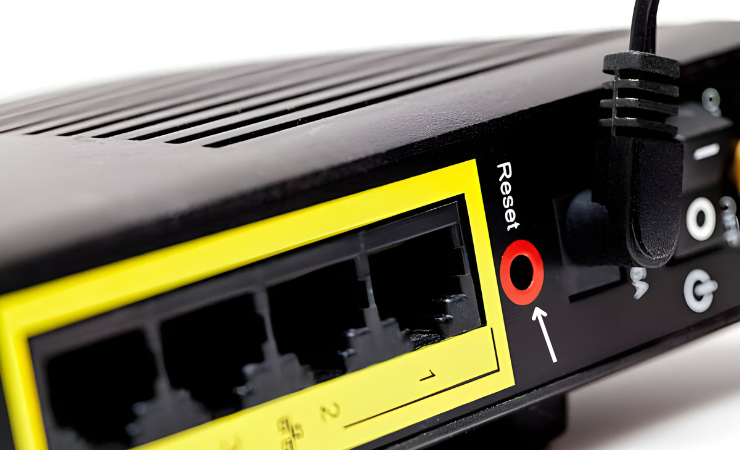Resetting your NETGEAR router to its factory default settings can be necessary if you are having issues with connectivity or security, forgot your router admin password, or want to fully wipe the router before selling it or giving it away. This guide will walk you through what happens during a router reset when you should reset your NETGEAR router, and step-by-step instructions for performing a reset.
| When to Reset | When to Avoid Resetting |
| Forgot admin password | Minor connectivity issues |
| After a firmware update | Need to reboot router |
| Unable to connect devices | Just want to power cycle |
| Reset to factory defaults before sale/donation | Recently set custom settings |
| Resolve persistent connectivity or security issues | Want to preserve custom configurations |
In this page
What Does a Factory Reset Do on a NETGEAR Router?
A factory reset restores a NETGEAR router to its default configuration by erasing all custom settings and restoring it to its original out-of-the-box state. Here’s exactly what happens:
- Resets all settings to default, including your custom SSID, WiFi password, and any configuration changes you have made.
- Erases personalized settings like parental controls, port forwarding rules, and guest networks.
- May be necessary if you forget the admin password or after a router firmware update.
Resetting should be used sparingly, as you will need to reconfigure any custom settings you had previously set up on your router.

Preparing to Reset Your NETGEAR Router
Before performing a factory reset on your NETGEAR router, gather these materials:
- Locate the recessed Reset button on the back or bottom of the router. This button is typically labeled “Reset”.
- Find a paperclip or similar thin object to press the button with. Do not use excessive force.
- Ensure the router is powered on and the Internet light is solid.
For optimal security and performance, consider updating your router’s firmware before resetting.
How to Factory Reset a NETGEAR Router?
Follow these steps to perform a factory reset on your NETGEAR router:
- Take a paperclip and press and hold the Reset button for 7-10 seconds until the router’s lights begin flashing.
- Release the button and wait for the router to finish erasing settings and fully reboot. This can take up to 2 minutes as default settings are restored.
- Once powered back on, the router will have reverted to the default admin credentials listed on the router label.
Alternative Reset Methods for Specific Models:
- Using the router web interface, if still accessible.
- 30-30-30 reset method – with the router plugged in, hold reset for 30 seconds, unplug for 30 seconds, and plug back in for 30 seconds while still holding the reset.
Reconnecting to Your NETGEAR Router After Resetting
After resetting your NETGEAR router, use these steps to reconnect:
- The router will revert to the default SSID and the password printed on the router label.
- Re-enter any custom WiFi network names, passwords, and other settings if not using defaults.
- Reconnect wired and wireless devices to the network.
Troubleshooting Reset Issues
If you have problems resetting your NETGEAR router, try these troubleshooting tips:
- Ensure you’re pressing the correct button by checking for a “Reset” label.
- Press and hold the reset long enough – at least 7 seconds until the lights flash.
- If it doesn’t reset, retry holding the button longer.
- For stubborn issues, attempt a 30-30-30 power reset.
When to Avoid Resetting Your Router
While resetting your NETGEAR router can fix problems, avoid performing unnecessary resets to prevent losing your custom settings.
- If you just need to reboot to fix minor issues, don’t reset.
- Resetting will erase customized configurations that would need reconfiguring.
- First try other troubleshooting steps – rebooting, checking cables, and updating firmware.
Resetting your NETGEAR router erases all custom settings and restores factory defaults. This can resolve issues with connectivity, security, or lost passwords, but will require reconfiguring your WiFi network. Use this reset guide for step-by-step instructions on performing a successful factory reset when necessary, while avoiding unnecessary resets. Check NETGEAR’s support site for further troubleshooting advice.

